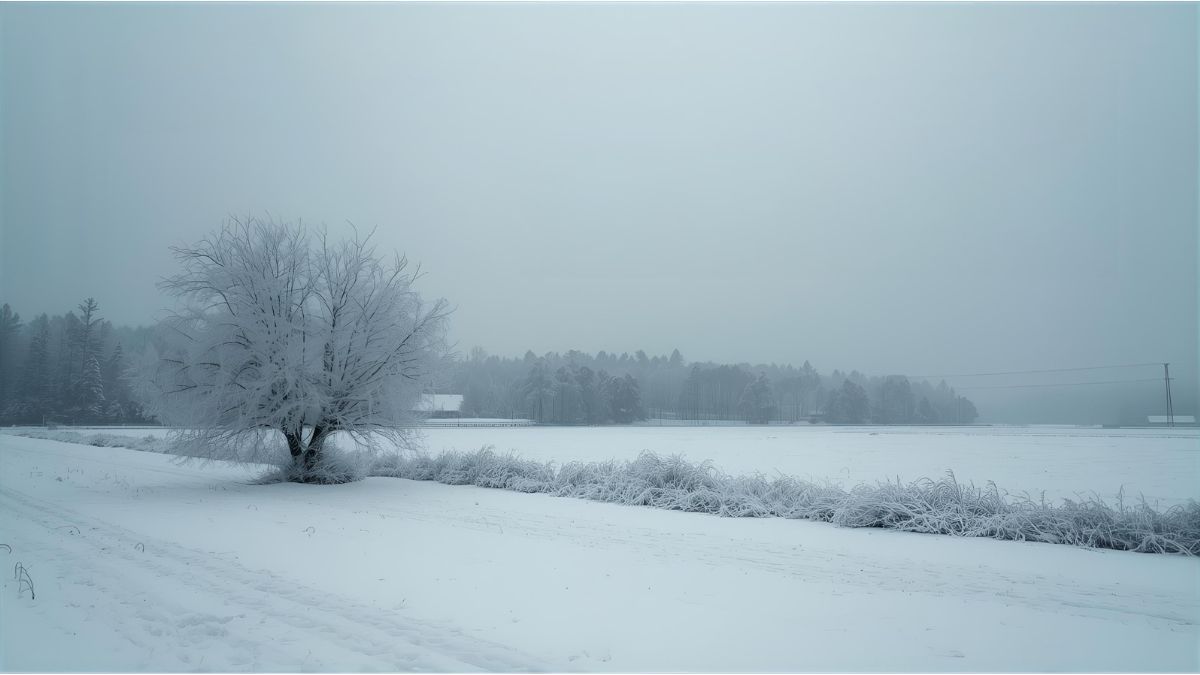Recent long-range models are painting an increasingly complex picture for the winter of 2025/26. For months, the U.S. NOAA’s CFS model had predicted a mild season — around one to two degrees warmer than the 1991–2020 average. But new simulations have shifted the tone dramatically. The latest update now projects only a slight positive deviation of +0.5 to +1°C, leaving room for colder regional phases and even extended frost periods.
Europe’s leading ECMWF model follows the same path, scaling back its earlier warm expectations. This joint cooling of two major systems is more than a statistical adjustment — it’s a warning sign of potential large-scale weather pattern shifts.
Meteorologists note that this emerging uncertainty often signals possible polar vortex weakening, combined with La Niña-like cooling in the Pacific, both known to unleash Arctic air toward Central Europe.
A growing cold signal – what the data really show
Artificial intelligence models that cross-reference global circulation, sea temperatures, and atmospheric dynamics tell a slightly different story than traditional systems. Based on historic analog winters and deep-pattern recognition, these AI simulations estimate a 45% probability of a colder and snowier winter than average for Central Europe.
The strongest indicators cluster around January and February, when continental airflows from the northeast could dominate. Such patterns often bring biting cold and persistent snow even to low-lying regions of Germany.
This is reminiscent of the winters of 1984/85 and 2009/10, both remembered for their intense cold and widespread snow cover.
Why experts are taking the trend seriously
What makes this winter’s setup particularly intriguing is the synchronization between multiple atmospheric layers — from North Atlantic sea surface temperatures to stratospheric anomalies and blocking highs over Scandinavia.
These elements, when aligned, create a kind of meteorological “lock-in effect,” trapping cold air masses over Europe for extended periods.
According to data provided by wetter.net, such a configuration could pave the way for a 20% chance of a true “century winter” — defined as a prolonged cold spell with snow and frost even in lowlands, potentially rivaling historical winters that shaped Germany’s climate memory.
Between a mild trend and a potential record freeze
While there’s no unanimous verdict among forecasting systems, the overall direction is shifting.
In early autumn, the CFS runs leaned heavily toward mild weather. Now, both CFS and ECMWF forecasts have moved toward neutral, suggesting higher odds for at least regional cold waves that may last longer and bite harder.
When combined, current probabilities point to roughly:
- 40–50% chance of a below-average, snow-rich winter, and
- 20–25% chance of a historic “century winter.”
This doesn’t mean Germany is guaranteed an extreme season — but it does mean the ingredients for one are present.
If the polar vortex weakens and northern blocking patterns intensify, the winter of 2025/26 could very well enter the record books as one of the toughest in recent decades.
Outlook: All eyes on the polar vortex
For now, meteorologists remain cautious but intrigued.
Autumn patterns in the Alps already hint at an early shift toward winter conditions.
As model runs continue through November, one thing becomes clear: This winter will not be ordinary — and could redefine what “cold” means for a generation of Germans.









